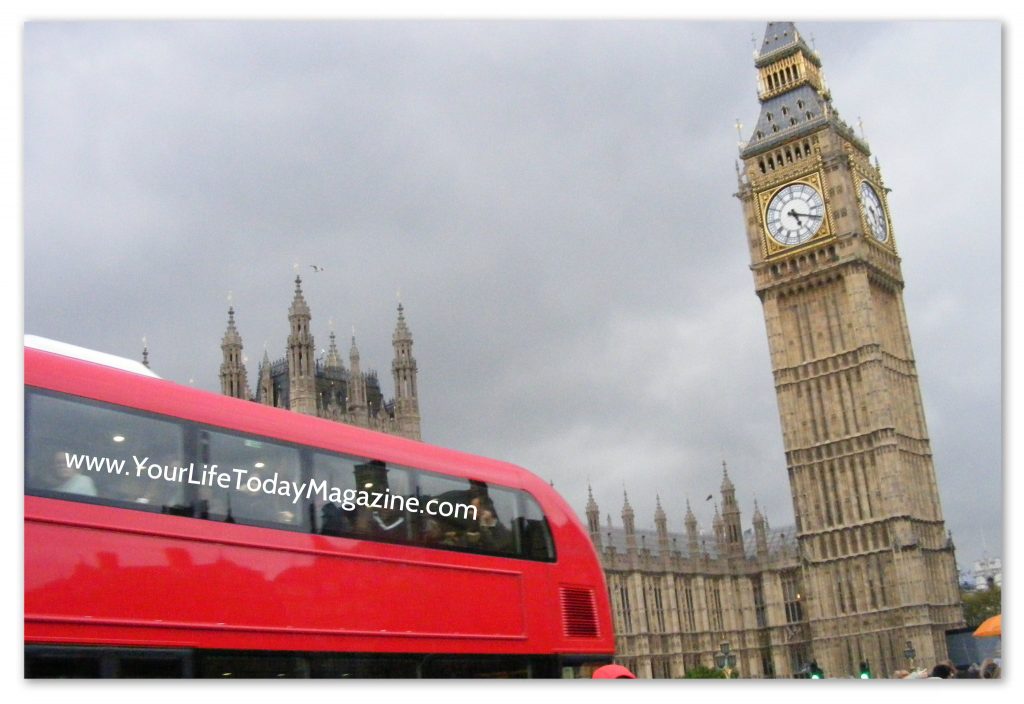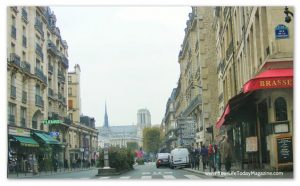

When I was younger, my goal when traveling was to cram as much as I possibly could into a trip. I figured I could enjoy the view once the pictures came back!
Circumstances have changed in my life, and I realize that since I still want to travel, I need to change the way I do it. Below are a few things that have helped me now that my energy level isn’t what it once was.
First, find a place to stay that is as comfortable as you can afford. It would be nice if it has a microwave and a pleasant view if you end up spending more time in your room than you had originally planned. A decent night’s sleep is important, and you will need a good location for down time. 
Build down time into the trip. Naps, pool/beach time, a picnic enjoying a pretty spot and sipping tea or lemonade at a sidewalk cafe can all be enjoyable and refreshing. Try to find a place as close to some of what you want to do as possible.
Make your hotel or condo your home base and do day trips from there so you don’t have to use your energy packing up and moving a lot. Cruises can also be a nice option for the same reason. Some countries have nice trains that allow you to travel, sightsee and sleep without having to move your luggage. (The reliability and comfort of trains can vary considerably so check reviews before booking.) Alternate active days with less active days. Don’t plan a long day of sightseeing the day after you arrive. In fact, don’t plan a long day of sightseeing at all. Shorter visits to sites interspersed with relaxing activities will help you preserve your energy and keep everyone happier.

Have a flexible schedule so that you can do what you feel like doing and rest when you need to. Avoid making any reservations that are non-refundable. You may also find it helpful to purchase travel insurance.
Unless it is for a show that tends to sell out or you have your heart set on a particular performance, buying tickets the day of a performance can be a good way to save yourself money in case you aren’t able to attend, and unsold seats are sometimes discounted on the day of the performance.
Traveling and carrying luggage can wear you out. Pack lightly and take advantage of any luggage help available. A few resorts offer luggage pickup from the airport.
Shuttle services let others worry about traffic and directions. Many hotels offer free shuttle service between the airport or train station and the hotel. There are also private shuttle services that can customize an itinerary for you. A few even have interesting vehicles that make the ride itself part of the fun.
Some cities and national parks offer trolleys or buses that take you to many of the points of interest with on/off options all day for the same price. (Make sure to note the time when the service ends for the day.) If you get a multi-day pass, on the first day you might want to simply stay on the trolley for the full route to rest and get an overview of what you’d most like to do in the next few days.
Prioritize. No matter how much someone travels, he or she will never see every single lovely spot in this world. There will always be more out there, so don’t make a checklist of “must-sees” take the fun out of what you’re doing. Figure out a few things you’d most like to do where you’re going, and make those things top priority. Everything else is a bonus.
My well-traveled and fun-loving grandmother said that the first thing she would do when she arrived in a new place was go to the postcard kiosk to see what seemed like the most interesting spots for her adventures. We now have the benefit of the internet that allows us to do extensive research before arriving, but I still love good old-fashioned postcards!

Find out ahead of time where the nearest medical facilities that offer services that you may need are located and how your insurance will work with them.
Check with your doctor before making travel arrangements. There can be a number of health factors to consider when choosing a destination. For example, people with certain conditions should avoid extreme changes in altitude or air pressure and those with compromised immune systems need to avoid areas where there have been recent outbreaks of serious infectious diseases.
Always check the guidelines and restrictions for any medical equipment you need to take. They can vary between countries or transportation companies.(For example, some have had issues bringing oxygen onto planes due to air pressure concerns or other reasons.)
Always bring copies of your prescriptions and keep essential items with you in your carry-on in case checked luggage gets lost or delayed. (The same is true for all of your travel documents and other necessities.)
There are travel agencies that specialize in travel for people with health challenges and disabilities.
Some companies have special medical transport planes, and there are companies that offer accessible van rental.
There are mini tour buses so you don’t need a very large travel group to have the advantages of a tour bus. A large family or a group of friends might meet the minimum. Because they are smaller, they can also often get closer to tourist sites than large buses which makes things much easier for slow walkers and others.
You might find it useful to bring a small air filter that both cleans the air and muffles sound in case your hotel room isn’t as quiet as you’d hoped.
Customs or security might look twice at this if you’re traveling by plane, but otherwise, it’s very nice to bring Epsom salts to soak sore muscles and reduce swelling the evening of your arrival.(Epsom salts have been used for centuries, but there are some conditions where this not advised. Check with your doctor.)
A box of band-aids for blisters and an extra pair of comfortable shoes worn with socks always make it into my suitcase. Snacks and a light change of clothes and jacket usually make it into a day bag just in case.
Even if you don’t use one normally, you might find it useful to rent a mobility scooter in certain locations if you are in pain or have trouble walking long distances. (Find a place to practice before entering crowded areas so that you keep yourself and others safe.)
Some companies and beaches offer beach wheelchairs to rent. They are designed to work much better on sand than regular chairs.
Even if you do not use a wheelchair, accessible trails at state and national parks often are easier to navigate for slow walkers, anyone pushing a stroller, and others facing health challenges. They provide access to some of the most popular sites and can offer breathtaking views. You can see some of the most amazing sights in the world even if hiking steep mountain trails is out of the question.
There are countless options for travel. While small towns often have more historic buildings that may or may not have been retrofitted to be easily wheelchair accessible, they do have the advantage of having smaller crowds, less traffic and shorter distances to go between parking and attractions. Things also tend to go at a slower pace which can be a welcome change when you’re tired of being rushed. Weigh your needs against these advantages of each.
We hope these tips will help you make the most of the moments!